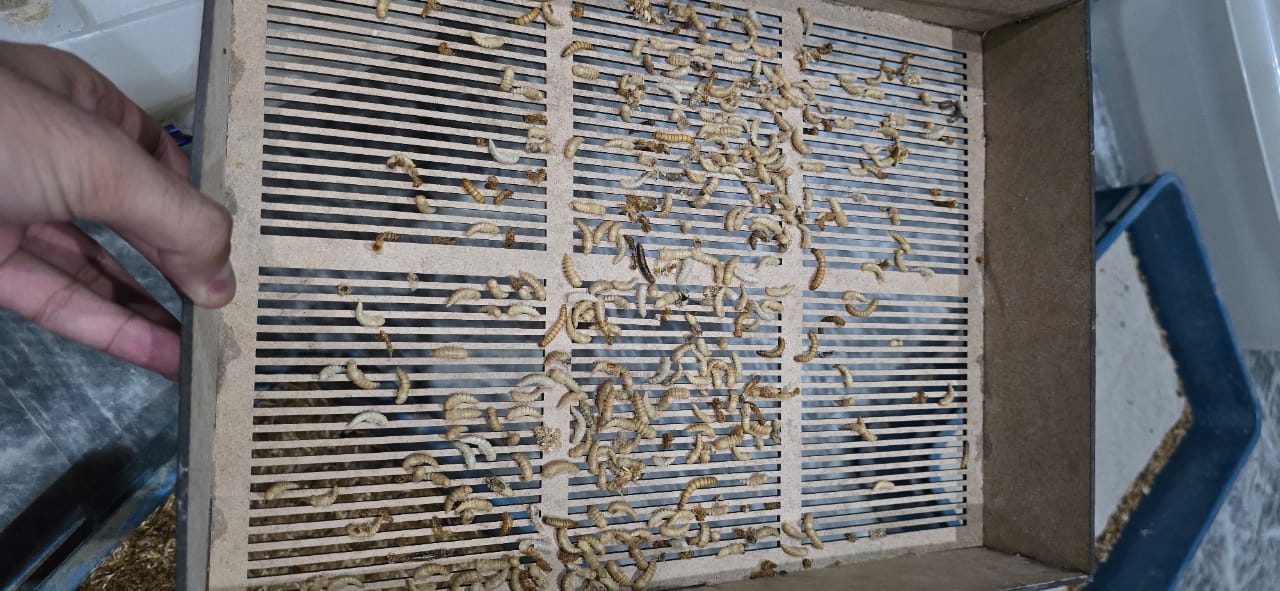In regions like Chakwal, where droughts and water scarcity pose significant challenges to traditional farming, innovation is not just a choice-it’s a necessity. Enter the unlikely savior: mealworms. These tiny insects, often overlooked, are now at the forefront of sustainable agriculture, offering solutions that are not only environmentally friendly but also economically viable.
Mealworm farming is proving to be a game-changer for farmers in arid and drought-prone areas. With their minimal water requirements, high nutritional value, and ability to produce organic fertilizer (frass), mealworms are redefining what it means to farm sustainably in challenging environments.
Why Mealworms Are Ideal for Drought-Prone Areas Like Chakwal
Chakwal, known for its semi-arid climate, is one of many regions in Pakistan where farming has traditionally relied on seasonal rains and limited water resources. In such areas, traditional crops and livestock face constant threats from erratic rainfall, rising temperatures, and soil degradation. Mealworm farming offers a unique alternative that addresses these challenges directly:
- Minimal Water Requirements
Unlike traditional farming, which demands large amounts of water for irrigation and livestock, mealworm farming requires almost no water. Mealworms derive moisture from their feed, such as carrot slices or vegetable scraps. This makes them perfectly suited for regions where water scarcity is a persistent issue. - High Nutritional Value for Livestock
Mealworms are rich in protein, essential amino acids, and healthy fats, making them an excellent alternative to traditional animal feed. For farmers in Chakwal, incorporating mealworms into poultry and livestock feed ensures that their animals receive the nutrition they need, even during times when conventional feed is either too expensive or unavailable. This directly addresses feed security, which is a critical concern in drought-prone areas. - Organic Fertilizer for Dry Soil
The frass produced by mealworms is a nutrient-dense organic fertilizer that enriches soil health. It enhances the soil’s water-retention capacity, a crucial factor in arid regions where every drop of water counts. By using frass, farmers can improve crop yields without relying on expensive chemical fertilizers, further reducing their dependency on external inputs. - Low Space Requirements
Mealworm farming does not require expansive land, making it accessible to smallholder farmers in Chakwal. A few trays stacked in a small area are enough to produce a significant yield of mealworms, making it an efficient solution for farmers with limited resources.
Multiple Benefits for Farmers
The versatility of mealworm farming ensures that it benefits farmers in multiple ways:
- A Steady Income Stream: Mealworms can be sold as a high-value product in markets catering to animal feed, organic farming, and even aquaculture industries. For smallholder farmers, this provides a reliable income stream, even in seasons when traditional crops may fail.
- Improved Livestock Health: By supplementing poultry and livestock feed with mealworms, farmers ensure better animal health, which translates to higher productivity in terms of eggs, milk, or meat.
- Cost Savings: Farmers can produce both feed and fertilizer on-site, significantly reducing their operational costs and dependency on external suppliers.
Transforming Chakwal’s Agricultural Landscape
In Chakwal, the adoption of mealworm farming is beginning to transform the agricultural landscape. Farmers who have integrated mealworms into their practices are finding that they can maintain livestock health, improve soil fertility, and reduce their reliance on water-intensive crops. This shift is especially critical in a region where traditional farming methods are becoming increasingly unsustainable due to changing climate patterns.
Moreover, mealworm farming aligns with the principles of climate-smart agriculture, which emphasizes resilience, sustainability, and efficiency. By adopting mealworms, farmers in Chakwal are not just adapting to the challenges of drought-they are thriving despite them.
A Model for Other Drought-Prone Areas
The success of mealworm farming in Chakwal serves as a model for other arid and semi-arid regions in Pakistan and beyond. Whether it’s Balochistan, Tharparkar, or parts of Sindh, mealworms have the potential to revolutionize farming in water-scarce environments. With the right training, resources, and support, farmers in these regions can replicate Chakwal’s success, ensuring food security, sustainable livelihoods, and environmental conservation.
Conclusion: Tiny Insects, Big Impact
Mealworms might be small, but their potential to transform agriculture in drought-prone areas like Chakwal is enormous. By requiring minimal water, providing high-quality feed and fertilizer, and generating steady income, these tiny heroes are proving to be a lifeline for farmers facing the challenges of a changing climate.
As more farmers embrace this innovative approach, mealworm farming is poised to become a cornerstone of sustainable agriculture in Pakistan, ensuring that even in the harshest conditions, farmers can not only survive but thrive.
So, the next time you see a mealworm, remember-it’s not just an insect; it’s a symbol of hope for farmers battling drought and scarcity.

